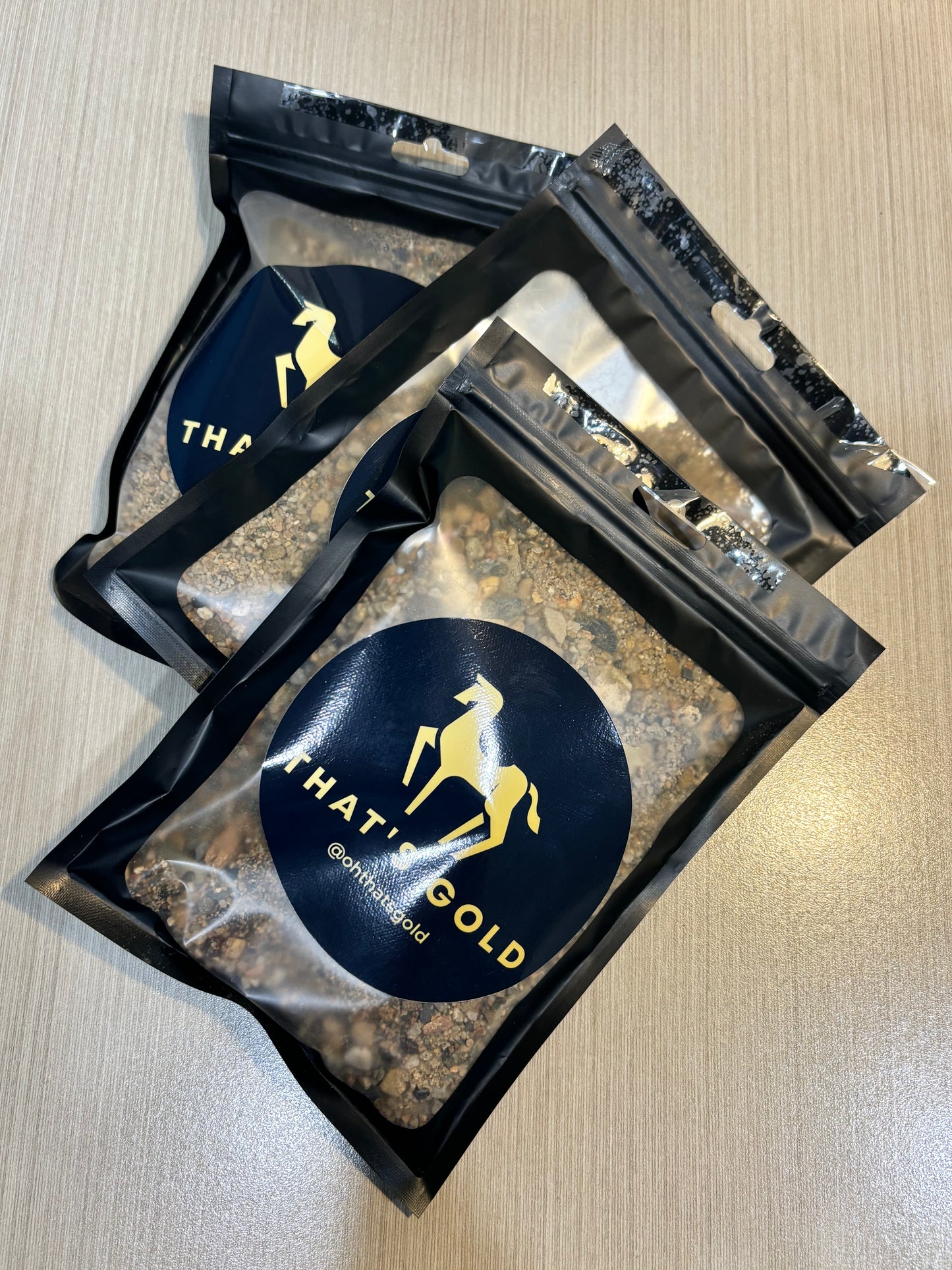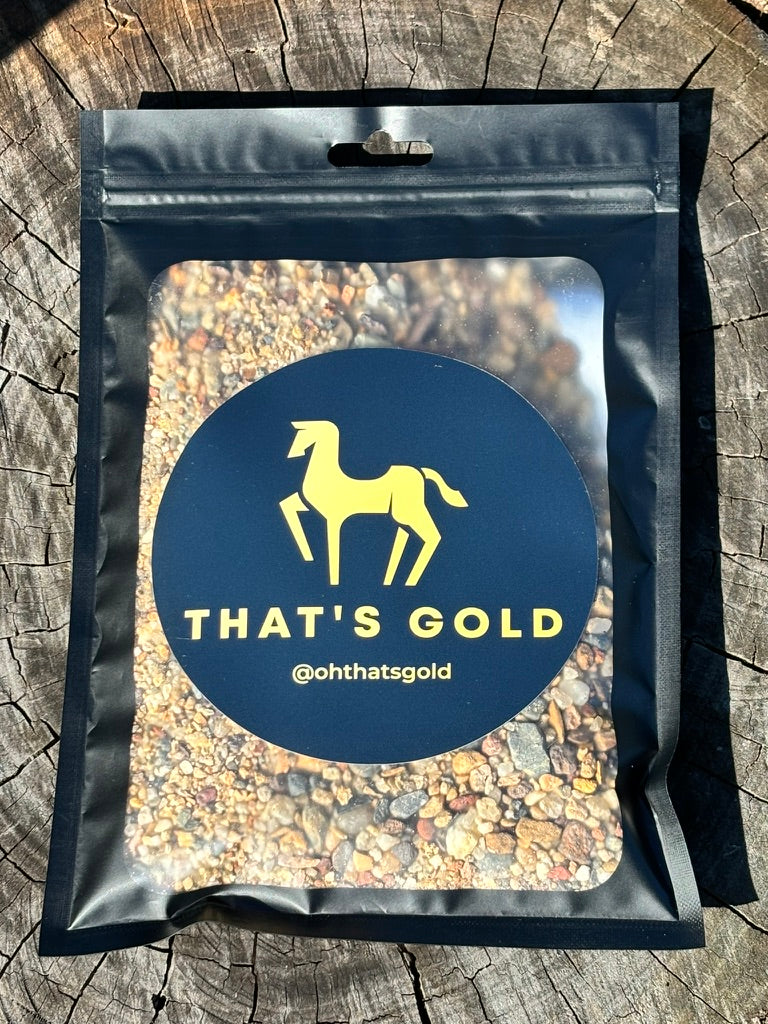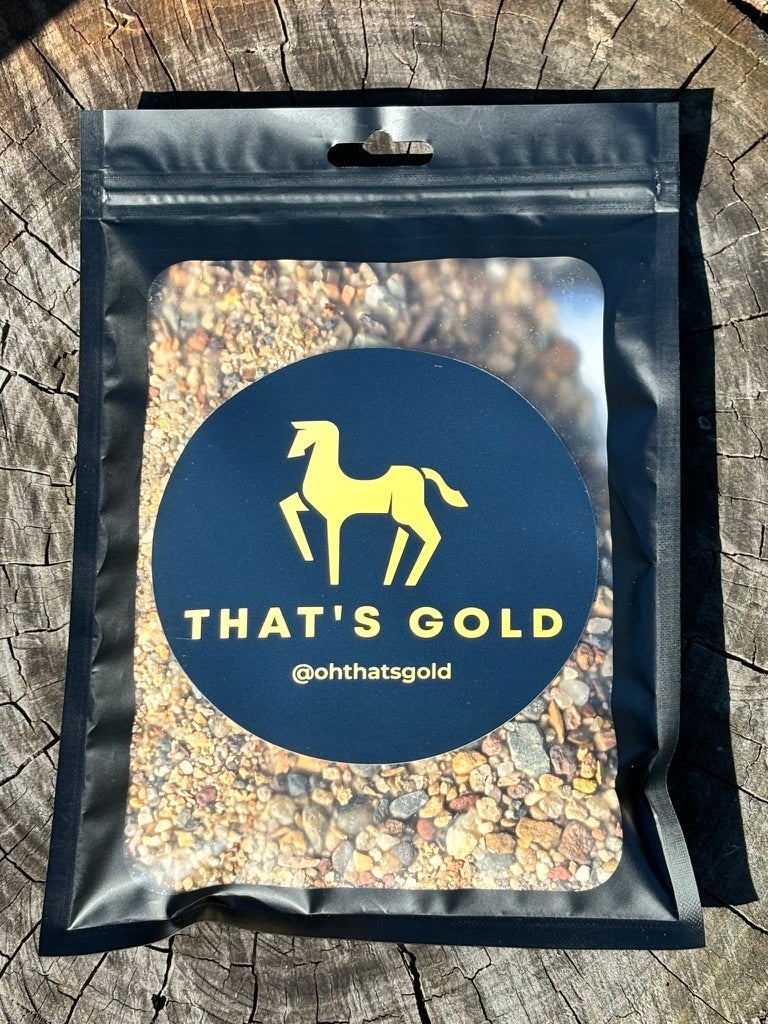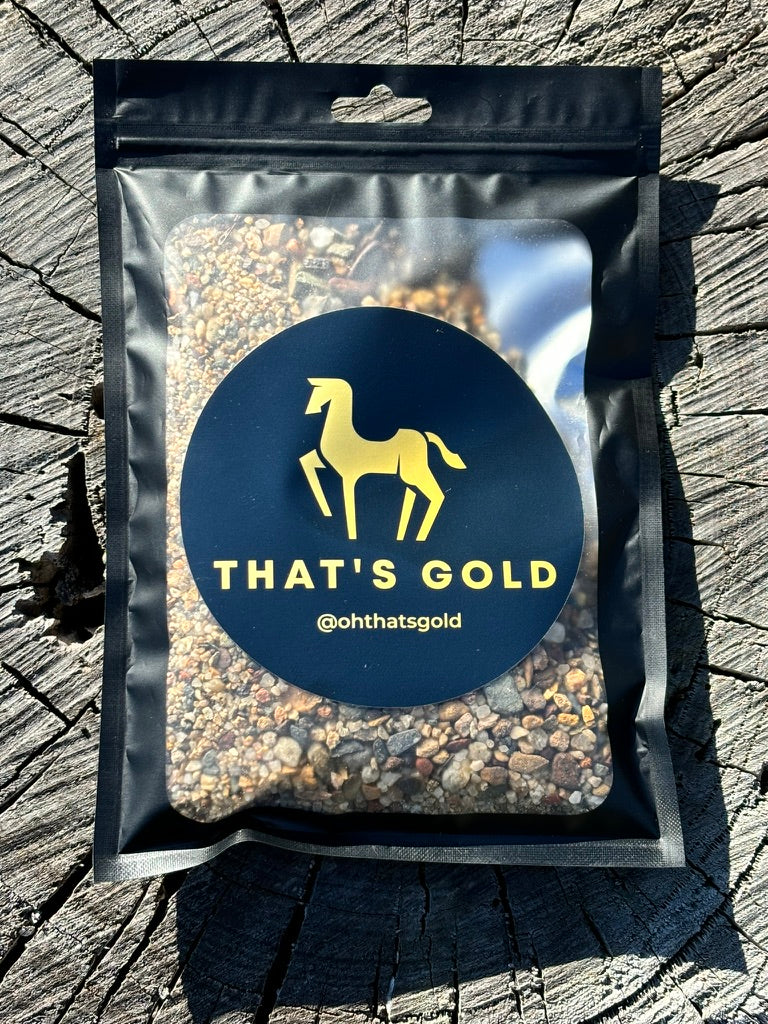Outdoor adventure sports enthusiasts are always hungry for the latest statistics and trends in their field. This blog post aims to satisfy that craving by compiling key figures about 4WD ownership, camping habits, industry revenue, top merchants, and more. By gathering these stats in one place, we're creating a valuable resource for writers, authors, and journalists covering the outdoor adventure sports niche.
From camping frequency to gold prospecting popularity, we'll explore fascinating data points that shed light on the scope and impact of outdoor activities. Whether you're a weekend warrior or an industry professional, these statistics offer insights into the ever-growing world of outdoor adventure sports.
The Importance of Statistics in Blogging
Statistics play a crucial role in creating compelling and authoritative blog content. They provide concrete evidence to support claims and arguments, enhancing the credibility of a blog post.
In the realm of SEO, statistics can significantly boost search engine rankings. Search algorithms often favour content that includes relevant data and figures, as these are seen as indicators of high-quality information.
For content marketing, statistics serve as powerful tools to engage readers and encourage social sharing. 80% of bloggers report strong marketing results when they incorporate data into their posts.
Statistics also help writers craft more focused and impactful content. By understanding audience preferences and behaviours through data, bloggers can tailor their posts to meet readers' needs more effectively.
In the competitive world of blogging, statistics can set a post apart. They provide unique insights that readers value, increasing the likelihood of backlinks and improving the blog's overall authority.
Incorporating statistics into blog posts can lead to higher engagement rates. Readers often find numerical data easier to digest and remember, making the content more valuable and shareable.
Understanding the Audience for Outdoor Adventure Sports
Outdoor adventure sports enthusiasts form a diverse group with shared passions. They crave excitement, physical challenges, and connection with nature. This audience spans various age groups and backgrounds, united by their love for the outdoors.
Demographics play a crucial role in tailoring content for this audience. Age, gender, location, and specific interests help shape messaging that resonates. For instance, younger adventurers might prioritise extreme sports, while older enthusiasts may prefer leisurely hikes or camping.
Social media platforms are vital for reaching outdoor enthusiasts. Instagram and YouTube are particularly popular for sharing stunning visuals and adventure videos. Many followers engage with travel bloggers and influencers who showcase their experiences.
Travel blogs focused on outdoor adventures have surged in popularity. These platforms offer a mix of practical advice, gear reviews, and inspiring stories. Readers often seek destination recommendations, packing tips, and safety information.
Key audience interests include:
- Sustainable travel practices
- Gear recommendations and reviews
- Skill-building tutorials
- Remote and off-the-beaten-path destinations
- Conservation efforts and environmental awareness
Understanding this audience's motivations is crucial. They seek not just physical challenges, but also personal growth, cultural experiences, and connections with like-minded individuals.
Outdoor Adventure Sports Participation Statistics
Outdoor adventure sports have seen significant growth in recent years, with increasing numbers of people engaging in activities like 4WD driving, camping, and even gold prospecting. These pursuits offer exciting ways to connect with nature and challenge oneself in the great outdoors.
4WD Ownership and Usage
Four-wheel drive vehicles have become increasingly popular among outdoor enthusiasts. In Australia, approximately 15% of households own a 4WD vehicle. This figure has grown steadily over the past decade, reflecting the rising interest in off-road adventures and remote travel.
4WD owners typically use their vehicles for a variety of purposes. About 60% use them for weekend getaways and camping trips, while 30% regularly embark on longer off-road expeditions. Interestingly, 25% of 4WD owners report using their vehicles daily for urban commuting as well.
The most popular 4WD activities include:
- Beach driving
- Desert exploration
- Mountain trail adventures
- Overlanding trips
Camping Frequency and Trends
Camping continues to be a beloved outdoor activity for many Australians. Recent surveys indicate that approximately 25% of the population goes camping at least once a year. Of these campers, 10% report camping every month, while 5% are avid enthusiasts who camp nearly every weekend.
The COVID-19 pandemic has significantly impacted camping trends. In 2020, there was a 30% increase in first-time campers compared to the previous year. This surge has continued, with many newcomers becoming regular campers.
Popular camping styles include:
- Tent camping (65%)
- Caravan or RV camping (25%)
- Glamping (10%)
Gold Prospecting Participation
Gold prospecting, while less common than other outdoor activities, has a dedicated following in Australia. Approximately 1% of the population engages in recreational gold prospecting at least once a year. This niche hobby has seen a modest growth of 5% annually over the past five years.
Most gold prospectors are weekend enthusiasts, with only a small fraction pursuing it as a full-time occupation. The activity is particularly popular in gold-rich regions such as Western Australia and Victoria. Interestingly, 70% of gold prospectors report that the thrill of discovery is their primary motivation, rather than financial gain.
Common gold prospecting methods include:
- Metal detecting
- Panning
- Sluicing
Economic Impact of Outdoor Adventure Sports
Outdoor adventure sports contribute significantly to economies worldwide. The sector generates substantial revenue and supports numerous jobs across various industries.
Annual Revenue Insights
The outdoor recreation economy in the United States accounted for $862 billion in gross output in 2021. This impressive figure represents 1.9% of the total GDP. The industry also supported 4.5 million jobs, highlighting its crucial role in employment.
In Australia, the nature-based outdoor recreation sector has a significant economic impact. While specific figures are not provided, the sector's contribution to employment, expenditure, and Gross Value-Add (GVA) is substantial.
Investing in outdoor recreation sites is a key driver of economic impact. Group size also plays a role, with most outdoor recreationists travelling in groups of 2-4 people, often for overnight stays.
Market Leaders in Adventure Gear
While specific rankings of top outdoor adventure sports merchants are not provided in the search results, several companies are known for their dominance in the industry. These include brands like The North Face, Patagonia, and REI.
The outdoor gear market is highly competitive, with companies constantly innovating to meet the evolving needs of adventure enthusiasts. Many of these brands focus on sustainability and eco-friendly practices, aligning with the values of their target audience.
Local outdoor gear retailers also play a crucial role in supporting regional economies, often serving as hubs for community engagement and outdoor education.
Demographics and Psychographics
Understanding the demographics and psychographics of outdoor adventure sports enthusiasts is crucial for marketers and businesses in this sector. These insights help tailor products and services to meet the specific needs and preferences of different audience segments.
Country-Wise Camping Demographics
Australia boasts a strong camping culture, with 25% of Australians going camping at least once a year. The age group most likely to camp is 30-54 years old, comprising families with children.
In the United States, camping participation has seen steady growth, with 48.2 million households camping at least once in 2020. This represents a 6% increase from 2019.
European countries like Germany and France also show high camping participation rates. In Germany, 8% of the population camps regularly, while France sees 13% of its population engaging in camping activities annually.
These demographic insights help businesses target their marketing efforts and product development to specific regions and age groups within the outdoor adventure sports market.
Content Creation for Adventure Sports Blogging
Crafting engaging content for adventure sports blogs requires a strategic approach. Selecting captivating topics, structuring posts effectively, and incorporating multimedia elements are key to attracting and retaining readers in this dynamic niche.
Choosing Engaging Topics
Selecting compelling blog topics is crucial for adventure sports content. Focus on trending activities and emerging gear to capture reader interest. Consider seasonal themes, such as winter skiing or summer hiking guides.
Analyse popular keywords and search queries related to outdoor pursuits. This helps identify what information adventure enthusiasts are seeking. Personal experiences and expert interviews can provide unique perspectives that set your blog apart.
Create a content calendar to plan posts around major events, like international competitions or gear launches. This ensures timely and relevant content for your audience.
Designing a Blog Post Outline
A well-structured outline serves as the backbone of any successful blog post. Start with a compelling headline that incorporates relevant keywords and captures the essence of your content.
Break down your post into logical sections, each addressing a specific aspect of the topic. Use subheadings to guide readers through the content and improve readability.
Include an introduction that hooks the reader and outlines what they'll learn. Plan for a mix of informational paragraphs, bulleted lists, and tips to maintain engagement throughout the post.
Consider adding a call-to-action at the end, encouraging readers to comment, share, or explore related content on your blog.
Writing and Structuring Your First Draft
When writing your first draft, focus on conveying information clearly and concisely. Begin with a strong opening paragraph that establishes the topic's relevance to adventure sports enthusiasts.
Use short paragraphs and simple language to enhance readability. Incorporate industry-specific terminology where appropriate, but explain complex concepts for beginners.
Include relevant statistics and facts to support your points and add credibility to your content. Cite reputable sources when referencing external information.
Maintain a consistent tone throughout the post, balancing enthusiasm for the subject with factual reporting. End each section with a smooth transition to the next, ensuring a logical flow of ideas.
Integrating Relevant Images and Videos
Visual elements play a crucial role in adventure sports blogging. Select high-quality images that showcase the excitement and beauty of outdoor activities. Use original photographs when possible to provide unique content.
Incorporate infographics to present statistics or step-by-step guides in a visually appealing format. This can help break up text and make complex information more digestible.
Embed relevant videos, such as gear reviews or technique demonstrations, to enhance the user experience. Ensure all multimedia content is optimised for fast loading times and mobile viewing.
Add descriptive captions and alt text to images for better accessibility and SEO. Consider creating custom graphics or banners to brand your blog and make it visually distinctive.
Search Engine Optimisation (SEO) Strategies
Effective SEO strategies are crucial for improving blog visibility and attracting readers. These techniques focus on optimising content, leveraging keywords, and utilising tools to enhance search engine rankings.
Incorporating Keyword Research
Keyword research forms the foundation of successful SEO. Identifying relevant keywords helps bloggers create content that aligns with user search intent. Tools like Ahrefs, Ubersuggest, and Google Trends provide valuable insights into search volumes and trends.
Bloggers should aim for a mix of short-tail and long-tail keywords. Long-tail keywords often have less competition and can drive targeted traffic. It's essential to incorporate keywords naturally throughout the content, including headers, meta descriptions, and image alt text.
Regular keyword analysis helps bloggers stay current with shifting search trends and adapt their content strategy accordingly.
On-Page SEO Best Practices
On-page SEO involves optimising individual blog posts to improve search engine rankings. Key elements include crafting compelling titles that incorporate target keywords and creating meta descriptions that entice clicks.
Header tags (H1, H2, H3) should be used to structure content logically. Internal linking helps search engines understand content relationships and improves user navigation. Optimising images with descriptive file names and alt text can boost SEO and improve accessibility.
Page load speed is crucial for both user experience and SEO. Compressing images and minimising unnecessary code can significantly improve load times.
Using AI Tools and Analytics
AI-powered SEO tools are revolutionising content optimisation. Platforms like SEMrush offer AI writing assistants that help create SEO-friendly content. These tools can suggest relevant keywords, analyse content readability, and provide optimisation recommendations.
Analytics tools are essential for tracking SEO performance. Google Analytics provides insights into traffic sources, user behaviour, and content performance. This data helps bloggers refine their SEO strategies and create more targeted content.
AI-driven tools can also assist with competitive analysis, identifying gaps in content strategies and opportunities for improvement.
Promoting Your Outdoor Adventure Sports Blog
Effective promotion strategies can significantly boost your outdoor adventure sports blog's visibility and readership. These methods focus on leveraging various channels to reach and engage your target audience.
Effective Social Media Marketing
Social media platforms offer excellent opportunities to showcase your outdoor adventure content. Create visually appealing posts featuring stunning landscapes and action shots from your adventures. Use relevant hashtags to increase discoverability and engage with your followers by responding to comments and messages promptly.
Consider partnering with outdoor brands for sponsored content or product reviews. This can help expand your reach and provide valuable resources for your audience. Live streaming or posting short video clips of your adventures can also captivate viewers and encourage them to visit your blog for more detailed content.
Utilise platform-specific features like Instagram Stories or Facebook Groups to foster a sense of community among your followers. Share behind-the-scenes content and quick tips to keep your audience engaged between blog posts.
Email Marketing and Subscriber Engagement
Building an email list is crucial for maintaining a direct connection with your readers. Offer a compelling lead magnet, such as an e-book on outdoor survival skills or a checklist for planning adventure trips, to encourage sign-ups.
Create a consistent email schedule to keep subscribers engaged without overwhelming them. Include snippets of your latest blog posts, exclusive content, and personalised recommendations based on their interests.
Segment your email list based on subscriber preferences or past interactions to deliver more targeted content. This approach can improve open rates and click-through rates, ultimately driving more traffic to your blog.
Networking with Bloggers and Subject Matter Experts
Collaborating with other outdoor adventure bloggers and experts can expand your reach and credibility. Participate in online forums and social media groups related to your niche to connect with like-minded individuals and potential collaborators.
Consider guest posting on other blogs or inviting guest contributors to your site. This cross-promotion can introduce your content to new audiences and provide fresh perspectives for your readers.
Attend outdoor adventure events and conferences to network in person. These gatherings offer opportunities to meet industry professionals, learn about new trends, and gather ideas for blog posts. Building relationships with experts can lead to valuable partnerships and enhance your blog's authority in the outdoor adventure space.
Evaluating Blog Performance and Analytics
Tracking key metrics is essential for assessing blog performance. Bloggers should monitor page views, bounce rates, and average time on page to gauge audience engagement.
Search intent plays a crucial role in content strategy. Analysing which keywords drive traffic helps align posts with reader needs. Google Trends offers valuable insights into popular search topics and seasonal trends.
Conversion rates measure how effectively a blog turns visitors into subscribers or customers. Setting up goals in Google Analytics allows tracking of specific actions like newsletter sign-ups or product purchases.
Keyword rankings indicate SEO effectiveness. Monitoring position changes for target keywords helps refine content optimisation efforts.
Backlinks are a key indicator of blog authority. Tracking the number and quality of incoming links highlights content that resonates with other websites.
Social media shares and comments provide immediate feedback on content appeal. These engagement statistics offer insights into which topics resonate most with the audience.
A/B testing different blog elements can uncover opportunities for improvement. Experimenting with headlines, images, or calls-to-action may boost overall performance.
Final Thoughts and Call to Action
This compilation of outdoor adventure sports statistics serves as a valuable resource for writers, authors, and journalists seeking reliable data. By centralising these key figures, we aim to provide a comprehensive reference point for the industry.
To ensure this guide remains current and useful, we encourage readers to contribute their own findings. Have you come across any noteworthy statistics not included here? Share them in the comments section below.
For those looking to dive deeper into specific areas, consider conducting a content gap analysis to identify additional topics of interest. This process can reveal new avenues for research and content creation.
Outdoor enthusiasts and industry professionals alike can benefit from staying informed about these trends. We recommend bookmarking this page for future reference and sharing it with colleagues who may find it helpful.
As the outdoor adventure sports sector continues to evolve, so too will the data surrounding it. Keep an eye on this space for regular updates and expansions to our ultimate guide of key statistics.
Frequently Asked Questions
Outdoor adventure sports in Australia have seen significant growth and participation in recent years. The following statistics provide insights into various aspects of this thriving industry, from participation rates to market size and demographic trends.
How many individuals participate in outdoor adventure sports annually in Australia?
Approximately 5.8 million Australians engage in outdoor adventure sports each year. This figure represents about 23% of the country's population, highlighting the popularity of these activities.
What is the estimated market size of the outdoor adventure sports industry in Australia?
The outdoor adventure sports industry in Australia is valued at AUD 2.5 billion annually. This includes equipment sales, guided tours, and related services.
Which outdoor adventure sporting activity records the highest participation rates in Australia?
Bushwalking tops the list of outdoor adventure sports in Australia, with over 1.2 million participants annually. It's followed closely by mountain biking and rock climbing.
What percentage of Australians invest in outdoor sports equipment each year?
Around 15% of Australians purchase outdoor sports equipment annually. This equates to roughly 3.75 million people investing in gear for their outdoor adventures.
Which age group leads in participation in outdoor adventure sports in Australia?
The 25-34 age group shows the highest participation rates in outdoor adventure sports in Australia. They account for approximately 28% of all participants across various activities.
What are the growth trends in the outdoor adventure sports sector over the past decade?
The outdoor adventure sports sector in Australia has experienced an average annual growth rate of 4.5% over the past decade. This steady increase reflects the growing popularity and accessibility of these activities.








